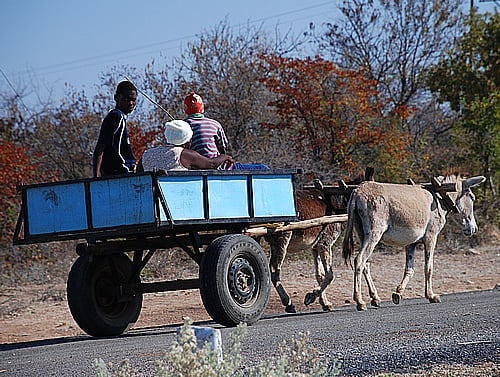In a village in rural Chipinge District on the Mozambican border in Manicaland Province, schoolchildren have become accustomed to being educated in roofless classrooms.
"The majority of the children learn in these run-down classrooms and the situation has been like this since 2000 when heavy rains destroyed the school," primary school teacher, Trymore Sithole, 46, told IRIN.
"We have tried our best to source for money to build new school blocks, toilets and teachers' houses as well as replace the furniture but no one is ready to help us," Sithole, a teacher at the school for the past 14 years, said.
The impoverished community cannot afford to donate money for the school's repair and a local business which used to contribute modest amounts before the cyclone, ended donations after the cyclone destroyed its grinding mill and beer outlet, Sithole said.
During the rainy season, from November to April, lessons are routinely disrupted and "trained teachers shun the school because of the poor working conditions, forcing us to work mostly with those that are unqualified." A recent government directive has also prohibited unqualified teachers from teaching.
Sithole said only a few children from the school managed to qualify for secondary education, with most dropping out to help with family chores or participate in cross-border smuggling of second hand clothes and cane spirits from neighbouring Mozambique.
Bridges unrepaired
Numerous bridges destroyed in the province by flooding remain unrepaired, further isolating already remote communities.
The sick are ferried by these carts to Mount Selinda Hospital, the nearest clinic about 60km away, but many people have died during the journey, Mabika said.
"We don't have shops from which to buy basic commodities because our area is not easily accessible. That means we have to travel long distances on foot to buy such small items as salt and matches," Mabika said.
Apart from the illegal cross-border trade activities, there are few income generating activities for villagers.
A communal irrigation scheme under which villagers grew vegetables for sale in Chipinge was abandoned when the dam from which the locals drew water was damaged but "even if the dam was repaired, it would still be difficult for us to transport our produce to the markets", Mabika said.
No money, no recovery
John Robertson, an economist based in the capital Harare, told IRIN the cyclone coincided with the start of the country's 10-year economic decline after President Robert Mugabe's ZANU-PF government instituted its "ill-advised" fast track land reform programme which redistributed more than 4,000 white commercial farms to landless blacks.
The violence associated with both the land programme and subsequent elections damaged the country's reputation and discouraged investment.
"If you consider the extent of the damage caused by floods in such countries as Mozambique [in 2000], Zimbabwe did not experience irreparable destruction and repairs should not have taken this long to be done," he said.
Robertson said the land reform programme led to a decline in tax revenue because it destroyed many businesses related to agriculture, one of the country's biggest sectors, making it difficult for the government to source money for disaster recovery.
fm/go/cb
This article was produced by IRIN News while it was part of the United Nations Office for the Coordination of Humanitarian Affairs. Please send queries on copyright or liability to the UN. For more information: https://shop.un.org/rights-permissions




